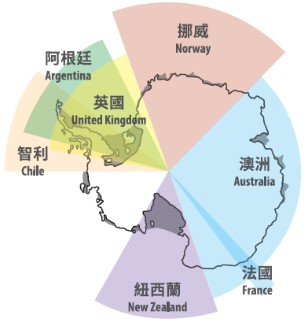Exhibition on the Theme
‘Beyond 60°S’ Exhibition
30 August – 30 November 2018
![]()

International tension as a result of disputed claims to territorial sovereignty was eventually defused by the formation of the Antarctic Treaty, which effectively internationalises Antarctica as a global commons.
In the late 1940s and the 1950s, territorial claims on the Antarctic continent gave rise to international tension between the competing claimants. These tensions were resolved by the conclusion of the Antarctic Treaty, the centrepiece of the Treaty System signed in 1959, which came into force in 1961. It suspended the various territorial claims on Antarctica and set it aside to ensure ‘in the interests of all mankind that Antarctica shall continue forever to be used exclusively for peaceful purposes and shall not become the scene or object of international discord’.
The Treaty covers the area south of the 60°S latitude. It has four main objectives:
The collective goals of these objectives are to make Antarctica a continent for peace and science.
The original 12 signatories to the Treaty have grown over the years to 46. The Treaty has also been strengthened by the adoption of a number of recommendations and agreements which also govern activities in Antarctica. Three international agreements are still in force:
This collection of agreements, including the original Antarctic Treaty, is now known as the Antarctic Treaty System. It has been hailed as a successful model of cooperative regulation of one of the globe’s largest commons.
For further interests, more information is available from The Antarctic of our sustainability hub.
#Antarctic Treaty #Contested Antarctica #Future Antarctica #Antarctic Marine Life #Antarctic Conservation
A well-curated resources hub packed with information on environmental protection, climate change and sustainable development, and designed to inspire the public to take action to combat climate change.
